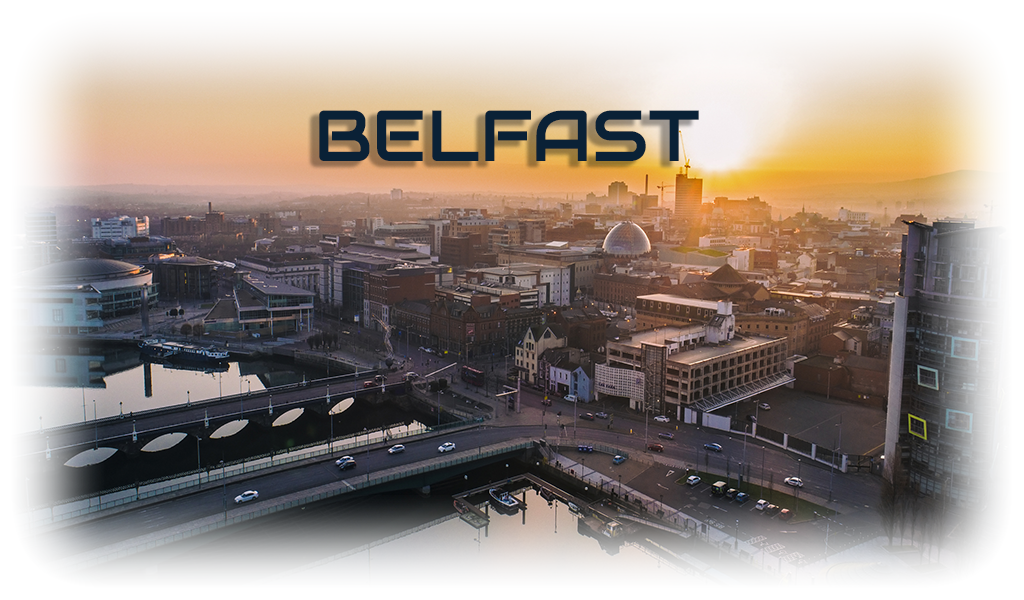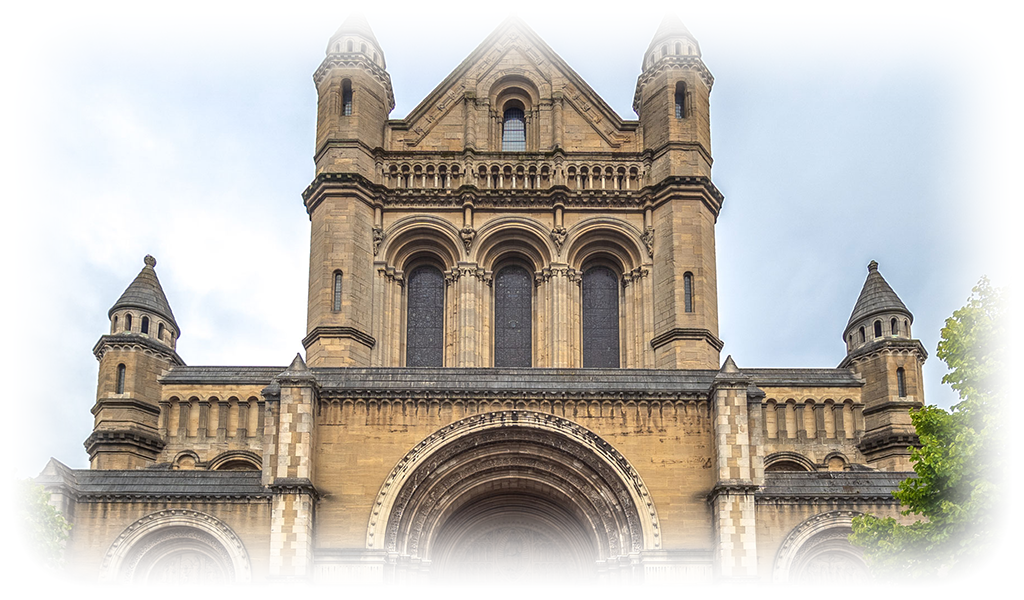
Belfast is a city of Great Britain and the capital of Northern Ireland. It was once a powerful shipbuilding center, on the shipyards of which the legendary Titanic was built. Belfast is a city with a wonderful Irish atmosphere, rich history, vibrant cultural life and charming provincial charm. Despite the scars of recent military conflicts (between government troops and Irish nationalists), the capital of Northern Ireland now lives a peaceful life and is one of Britain's safest places. Belfast attracts more and more tourists with its attractions, beautiful Victorian architecture, surrounding natural landscapes and interesting cultural sites.
Geography and weather
Belfast is located at the mouth of the River Lagan on the east coast of Ireland. To the north and northwest, the city is bounded by rows of hills. Belfast's climate is temperate maritime with a noticeable influence of the warm Gulf Stream. It is characterized by cool summers, rainy autumns and mild winters.
History and interesting facts
The name Belfast comes from the Irish Béal Feirsde, which can be translated as "Bridge at the mouth of the river." In fact, the territory of the modern city was inhabited more than 5,000 years ago. In fact, the history of Belfast began in the 12th century, when the British built a castle here. The city itself was founded in 1609 by English and Scottish settlers.
In the 17th century Belfast was a small provincial town that traded in wool and agricultural products. The rapid development of the city took place with the beginning of transatlantic trade. By the end of the 19th century, Belfast had become one of the largest shipbuilding centers in Europe. The city was also one of the largest industrial centers in Ireland.
In the early 20th century Belfast shipyards completed a number of ambitious shipbuilding and engineering projects, including the construction of the Titanic. Belfast was affected by the following military conflicts: the Irish War of Independence (1920-1922), World War II and the turmoil of 1970-1972.
Geography and weather
Belfast is located at the mouth of the River Lagan on the east coast of Ireland. To the north and northwest, the city is bounded by rows of hills. Belfast's climate is temperate maritime with a noticeable influence of the warm Gulf Stream. It is characterized by cool summers, rainy autumns and mild winters.
History and interesting facts
The name Belfast comes from the Irish Béal Feirsde, which can be translated as "Bridge at the mouth of the river." In fact, the territory of the modern city was inhabited more than 5,000 years ago. In fact, the history of Belfast began in the 12th century, when the British built a castle here. The city itself was founded in 1609 by English and Scottish settlers.
In the 17th century Belfast was a small provincial town that traded in wool and agricultural products. The rapid development of the city took place with the beginning of transatlantic trade. By the end of the 19th century, Belfast had become one of the largest shipbuilding centers in Europe. The city was also one of the largest industrial centers in Ireland.
In the early 20th century Belfast shipyards completed a number of ambitious shipbuilding and engineering projects, including the construction of the Titanic. Belfast was affected by the following military conflicts: the Irish War of Independence (1920-1922), World War II and the turmoil of 1970-1972.

How to get there
Belfast has two airports: city and international. The airports of the capital of Northern Ireland accept many regional and intra-European flights: London, Liverpool, Manchester, Edinburgh, Glasgow , Alicante , Amsterdam, Barcelona, Berlin, Geneva, Krakow, Nice, Paris, Prague, Rome, Venice.
Attractions
The Titanic Museum is one of Belfast's most famous cultural sites, dedicated to the construction and demise of one of the largest ocean liners of the early 20th century and the city's maritime history. Here you can take tours of the shipyard and the huge dock, in which more than a century ago the Titanic was built (the second liner of the class "Olympic"). An interesting modern building in the shape of a star preserves many interesting artifacts and offers interactive exhibitions.
Cathedral of St. Anne is the main Anglican Church in Ireland. This beautiful neo-Romanesque basilica was built in the late 19th century. Interesting features: beautiful sculptural portals, stained glass, mosaic ceiling and decorative wooden elements in the interior.
The Bolshoi Opera House is one of the most beautiful buildings in Belfast, built in 1895. In the midst of the 1972 military conflict, the theater was virtually destroyed. Fortunately, this building was restored in the 80s of the 20th century and is now considered a masterpiece of Georgian architecture.
Belfast Castle is one of the oldest buildings in Belfast, dating back to the 12th century. The current structure dates back to 1870 and is more reminiscent of a country mansion. The castle is located 6 km from the city center.
Stormont is a building of the Northern Irish Parliament, built in 1921 in the style of classicism.
The Town Hall is a fine example of early 20th century architecture and one of the main symbols of the capital of Northern Ireland. The building has a beautiful Renaissance facade and luxurious interior.
Crumlin Road Gaol is a Victorian prison closed in 1996. Now it is a museum filled with gloomy secrets.
Big fish is one of the most famous compositions of Belfast. This is a 10-meter statue, unveiled in 1999.
Church of St. Malachi is a Catholic church built in the 19th century in the architectural style of the Tudor era.
Church of St. Patrick is a Catholic church in the Gothic Renaissance, built in the second half of the 19th century.
Church of St. George is a religious building in the style of classicism, built in 1816.
Belfast has two airports: city and international. The airports of the capital of Northern Ireland accept many regional and intra-European flights: London, Liverpool, Manchester, Edinburgh, Glasgow , Alicante , Amsterdam, Barcelona, Berlin, Geneva, Krakow, Nice, Paris, Prague, Rome, Venice.
Attractions
The Titanic Museum is one of Belfast's most famous cultural sites, dedicated to the construction and demise of one of the largest ocean liners of the early 20th century and the city's maritime history. Here you can take tours of the shipyard and the huge dock, in which more than a century ago the Titanic was built (the second liner of the class "Olympic"). An interesting modern building in the shape of a star preserves many interesting artifacts and offers interactive exhibitions.
Cathedral of St. Anne is the main Anglican Church in Ireland. This beautiful neo-Romanesque basilica was built in the late 19th century. Interesting features: beautiful sculptural portals, stained glass, mosaic ceiling and decorative wooden elements in the interior.
The Bolshoi Opera House is one of the most beautiful buildings in Belfast, built in 1895. In the midst of the 1972 military conflict, the theater was virtually destroyed. Fortunately, this building was restored in the 80s of the 20th century and is now considered a masterpiece of Georgian architecture.
Belfast Castle is one of the oldest buildings in Belfast, dating back to the 12th century. The current structure dates back to 1870 and is more reminiscent of a country mansion. The castle is located 6 km from the city center.
Stormont is a building of the Northern Irish Parliament, built in 1921 in the style of classicism.
The Town Hall is a fine example of early 20th century architecture and one of the main symbols of the capital of Northern Ireland. The building has a beautiful Renaissance facade and luxurious interior.
Crumlin Road Gaol is a Victorian prison closed in 1996. Now it is a museum filled with gloomy secrets.
Big fish is one of the most famous compositions of Belfast. This is a 10-meter statue, unveiled in 1999.
Church of St. Malachi is a Catholic church built in the 19th century in the architectural style of the Tudor era.
Church of St. Patrick is a Catholic church in the Gothic Renaissance, built in the second half of the 19th century.
Church of St. George is a religious building in the style of classicism, built in 1816.








